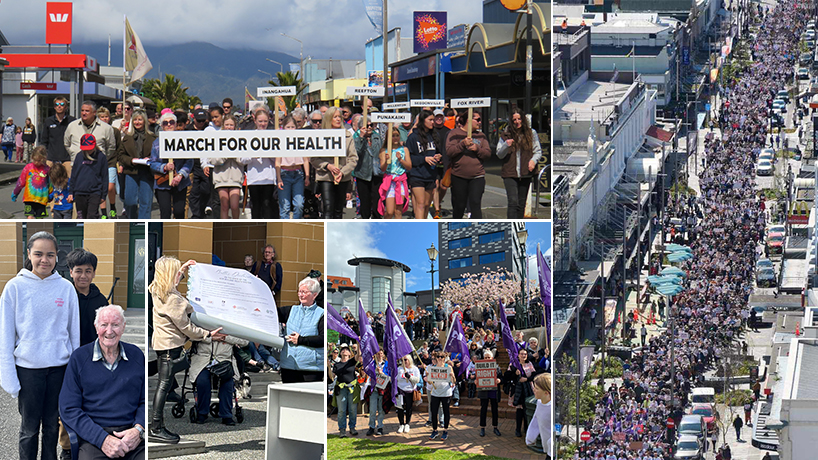| A betrayal of trust. This is at the heart of the deep sense of anger and betrayal felt by Ōtepoti (Dunedin) residents, who turned out in their tens of thousands over the weekend to protest plans to downgrade — or scrap entirely — their new hospital, says NZNO nurse and delegate Linda Smillie.
“Promises were made to the population that they would get the hospital – not a flash hospital, just an adequate hospital for the future,” said Smillie, who spoke at the march. “And then they just went ‘yeah, nah’.”
Smillie told Kaitiaki she could feel the depth of anger and determination among the 35,000-strong crowd — many of whom had never been on a protest before. Many had voted for National purely because of their promise to get the hospital built, finally. 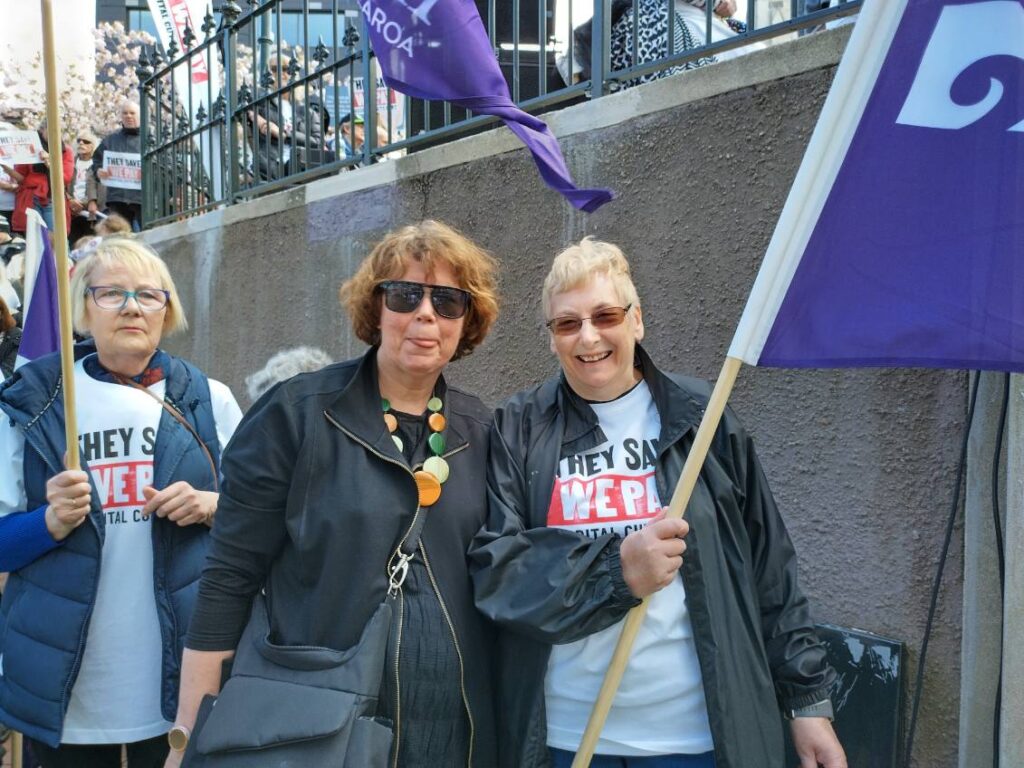 “It’s a betrayal of trust. It’s a betrayal of the people of the south for their ongoing health and their children’s health.” Smillie remembers Prime Minister Christopher Luxon, Health Minister Shane Reti and New Zealand First leader Winston Peters making those promises while visiting on the campaign trail last year. “Peters said, ‘We won’t nickel and dime it’.” But Reti last week stood with Infrastructure Minister Chris Bishop as he broke the “blunt truth” that with projected costs of up to $3 billion, the new hospital as it currently stood was unaffordable. Spending that much would cost other regions needing health and hospital upgrades, such as Nelson, Whangārei and Napier, Bishop said.
Options were to downgrade the new design with fewer floors and delay fit outs, or refurbish the current site — an idea that has been widely panned in earlier engineering reports. The hospital — which serves Otago and Southland — was to have been built for $1.88 billion by 2029. But a Government-commissioned review by Australian consultant Robert Rust (former chief executive of Health Infrastructure New South Wales) found the project would cost “several hundred million” more. 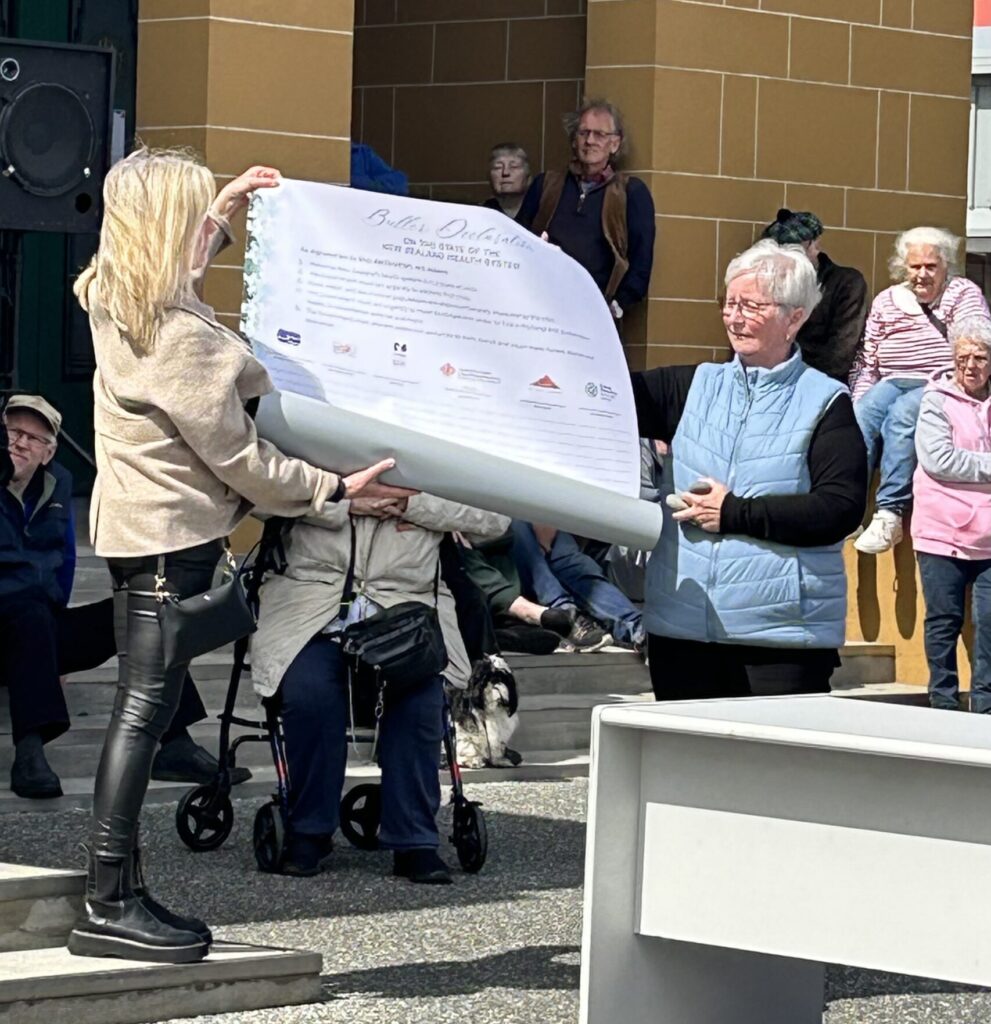 Nor had enough been set aside for associated costs such as a pathology lab, refurbishment and car parking, which Rust estimated would cost another $400 million. But other key reports are yet to be released. In 2015, the National-led Government promised to build a new hospital on the former Cadbury chocolate factory site, after problems with asbestos, crumbling concrete and dated layout at the current site. But it took another seven years for construction to begin, in 2022. Hospitals or cigarettes?Smillie said seeing financial decisions the Government was making — giving landlords a $2.9 billion tax break, setting aside $216 million to offset tax breaks on heated tobacco products such as vapes — was fuelling the anger. “When people hear about them spending all that money on landlords and tobacco companies and then they say ‘well we can’t afford your hospital’ — that also is feeding the anger,” she said. “It just goes to show that our health – especially in the southern area is not their priority.” |
West Coasters’ silent stand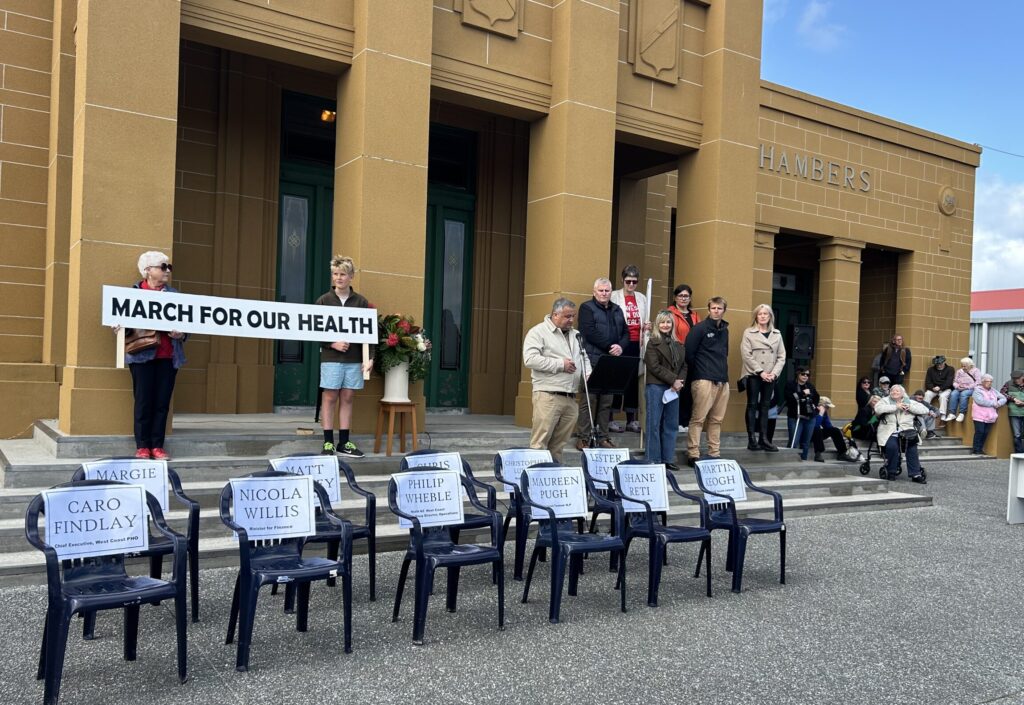 As their fellow South Islanders noisily rallied in Ōtepoti, on the same day over in Westport, locals made a silent stand over the loss of their after-hours GP clinic and cuts to air rescue and ambulance services. Buller’s new hospital has been forced closed multiple times due to lack of staff since opening last year. The nearest hospital is 100km away in Greymouth. 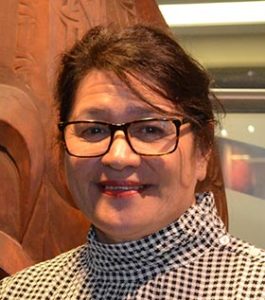 Advocacy group Patient Voice Aotearoa chair Malcolm Mulholland said about 2000 people turned out, about a fifth of the district, on the last weekend after-hours urgent GP services were available in the area. From today, October 1, urgent after hours primary care will only be available through telehealth. “Rurally isolated communities throughout the country need to be worried. Already I am getting calls from people in Kaitāia, Hawera, Masterton and Ōamaru whose towns could be facing what Buller is.” 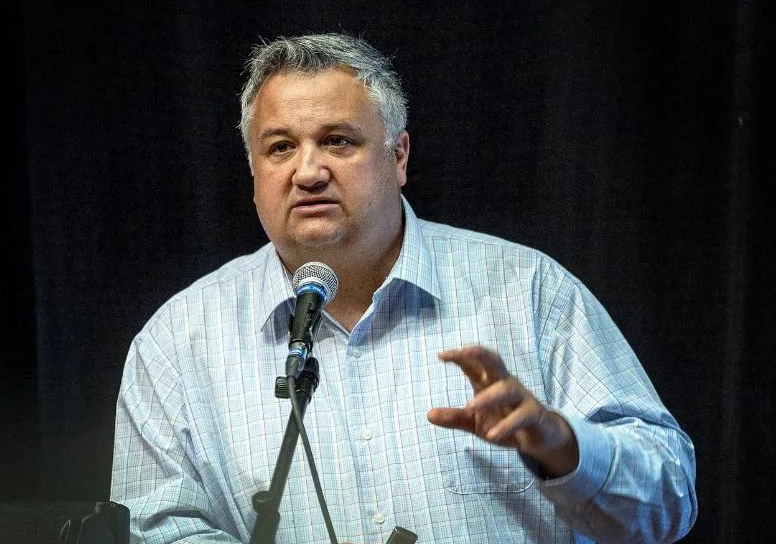 Mulholland launched the Buller declaration at Saturday’s march, warning Aotearoa’s health system was in crisis and in need of urgent investment. “While it’s called the Buller declaration, the intent is to share it around the motu. Buller is where it started but not where it will end,” Mulholland told Kaitiaki. He hoped to have it online after that to collect signatures before presenting it to Parliament. 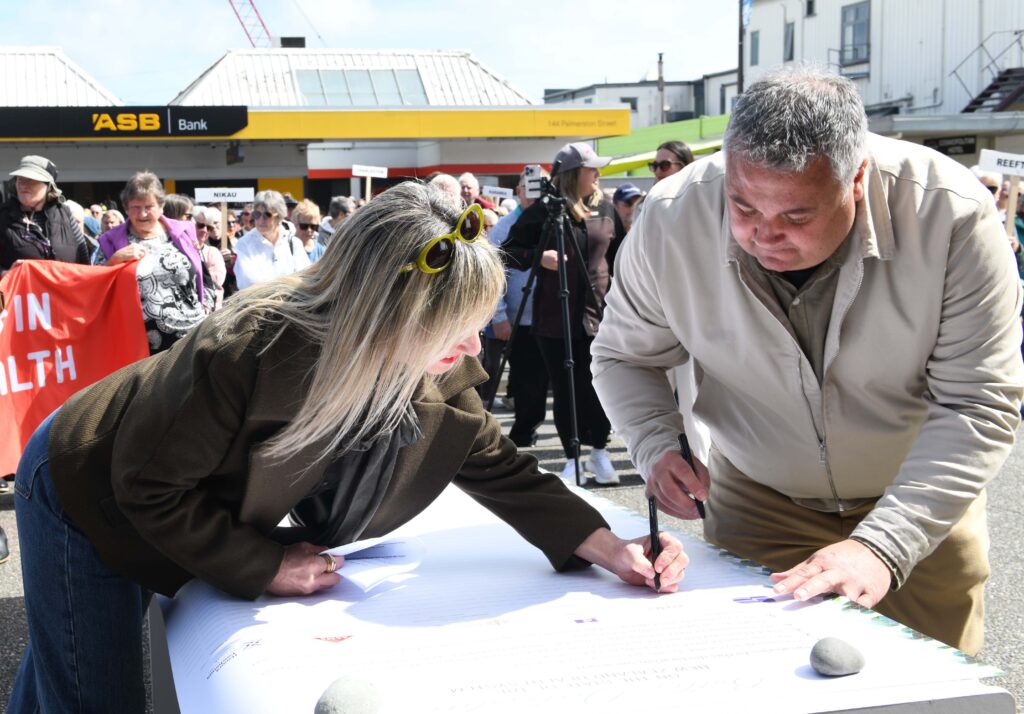 Supporting the declaration, NZNO kaiwhakahaere Kerri Nuku said loss of after-hours would impact the Coast’s rural areas. “This Government is forcing these people to accept a telehealth service over a real GP. That’s not only unfair, it is careless and neglectful,” she told Kaitiaki.  “Bigger hospitals in the cities won’t actually help rural communities like Buller, they need urgent health care after-hours that is close to them, not over so much terrain,” said Nuku, who also spoke at the event. She said it was important for nurses to support communities driving such protests, which were often poor and rural, she said. “There is no balance between the rich and the poor, the rural and the urban in the health of this country,” she said. “We should all be proud of this community, they showed up.” |
NZNO — Tōpūtanga Tapuhi Kaitiaki o Aotearoa president Anne Daniels, who also addressed the crowd, said the depth of anger, betrayal and “fear for our patients” was palpable.
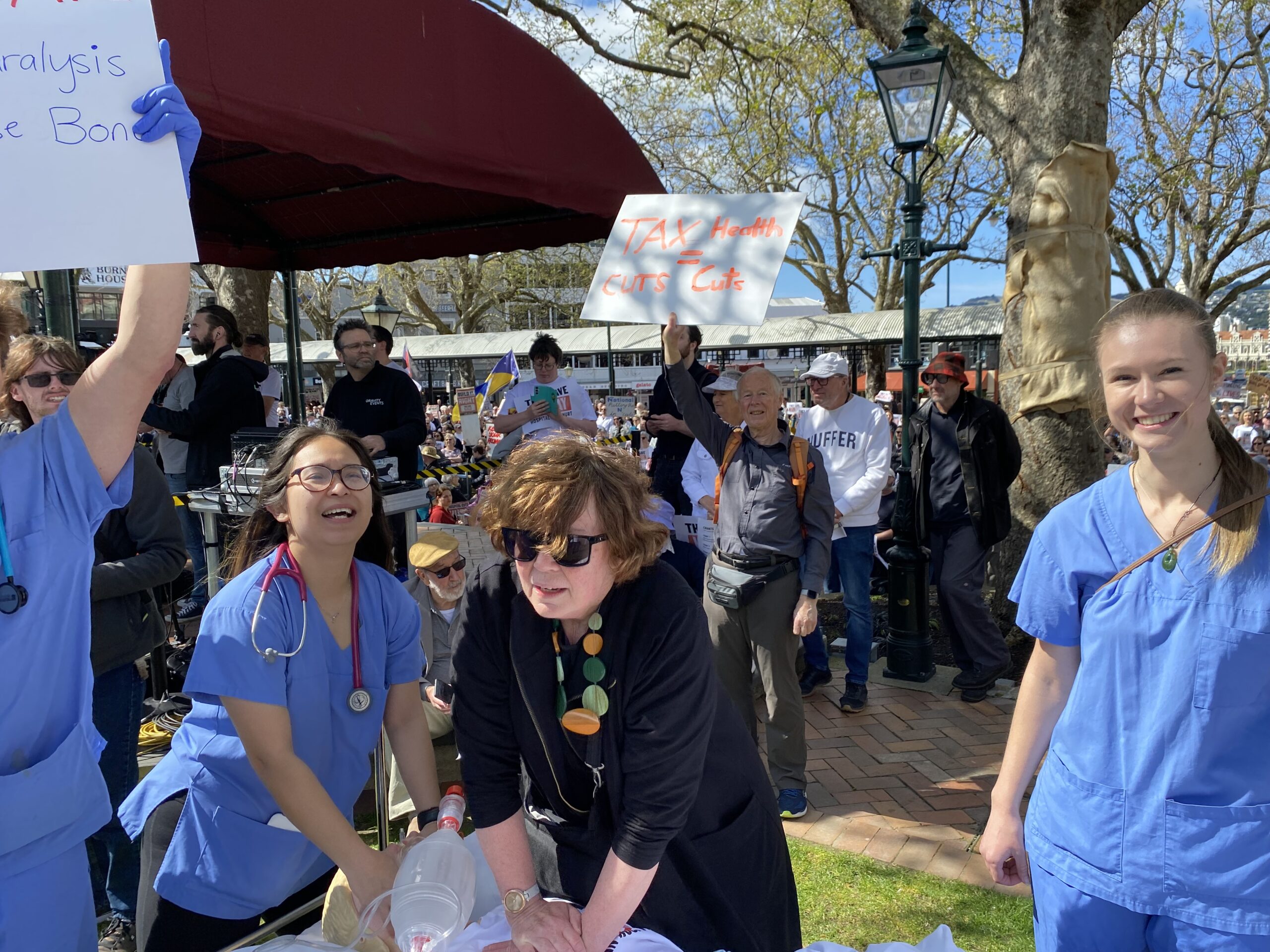
“If you make a promise, over and over again . . . then you would think that the very people who would be in government will take responsibility for ensuring they can meet the promises they made pre-election,” she said.
“For them to say they didn’t know, it makes me ask the question, ‘Are they fit to be in government?’ ”
She said hundreds of clinicians, including nurses, had given their time to ensuring the plans were evidence-based for best practice and care.
“We were invested in this process and we were made to believe – because we put our time, our hearts, our soul, our knowledge, our skill and our experience into it — that it would be done.”
Fears over impact on medical, nursing schools
Losing the new hospital, so many years in the planning, she said would have a huge impact on the whole region and also the medical, nursing and health sciences schools at the University of Otago.
“If we have a smaller hospital with fewer services, we will not be able to maintain accreditation nor will we be able to support more clinicians, nurses, doctors and everybody else to be educated in this area.”
Instead of building a new medical school in Hamilton, Daniels said the Government would be better to invest in Otago’s established facility to “grow our own” health staff.
A regional delegation to Parliament was planned, including the voices of nurses and other clinicians, she said.
“This is the beginning – we’re not going to accept the decision, absolutely not.”
- Linda Smillie has relaunched her 2023 petition to reverse cuts to the hospital.

This article was updated on October 4 to include more detail about the Buller declaration.



